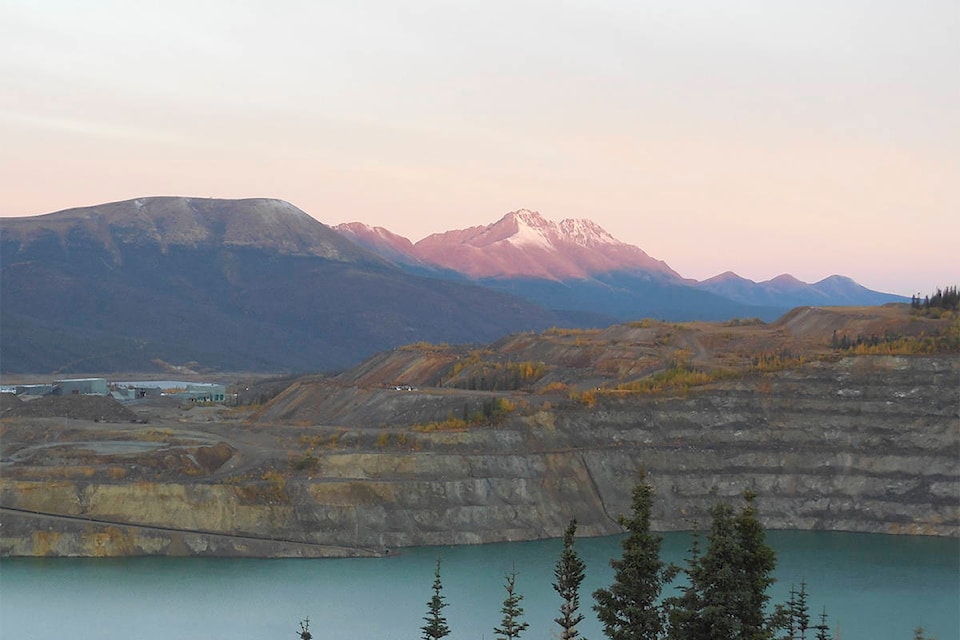Federal officials in charge of the Faro mine say they’re on schedule to submit cleanup plans to the Yukon Environmental and Socio-economic Assessment Board by the end of the year.
The assessment process could take three to four years before the plans are approved and get a water license, director Lou Spagnuolo told the media during an update on June 5.
If everything goes as planned construction will start in 2022 and take another 10 to 15 years to complete, employing approximately 100 people a year.
After that, the site will have to be monitored forever.
Officials are travelling to communities around the territory to update Yukoners on the plans.
“The overall goal of the plan is to keep clean water clean and to be able to collect contaminated water before it gets off site — to be able to collect it, store it, and treat it before being discharged into the environment,” Spagnuolo said.
The Faro mine was once the largest open pit lead-zinc mine in the world. When it shut down in 1998, 70 million tonnes of tailings and 320 million tonnes of waste rock were left behind, draining metals and acids into the water and land. The Canadian government was left to foot the cleanup bill.
For the last decade the site has been being maintained while officials worked on coming up with a cleanup plan.
Ottawa estimates it could cost up to half a billion dollars in federal money to clean up, on top of what has been spent already on care and maintenance.
In the immediate future the government is preparing to spend $70 million on the North Fork Rose Creek diversion.
“In 2014 we discovered some contamination that was getting into the North Fork Rose Creek at site. This had high levels of zinc in the water which can impact fish,” Spagnuolo said.
High levels of zinc are considered an “irritant” to fish, he said, making it difficult for them to survive in the water.
“Because levels increase slowly it has a tendency to keep fish away. Over the last four to five years the expectation is that the increase in zinc in the North Fork Rose Creek has pushed fish out of that stream.”
Once the diversion is built, the hope is the fish will come back, he said.
The request for proposals to find a construction manager for that one project just closed. The work itself should take two to three years, Spagnuolo said.
“The goal of the contract over the next two to three years is to construct a new clean water diversion to keep the clean water from being contaminated.”
Even urgent work, like the zinc discovered in the creek four years ago, can take years to plan for, Spagnuolo said.
“The site itself is very large and complex and even the urgent works piece itself which sounds like a very simple thing — constructing a diversion to keep clean water clean — is a complex project in itself.”
When the full remediation project is up and running, all diversion routes will be upgraded.
“At the same time we’re also installing a system to collect contaminated water — not only contaminated water that we’re seeing today but also contaminated water that might surface in the future,” Spagnuolo said.
“This includes installing a seepage intersection system. Sometimes that’s wells drilled into the ground that can collect contaminated ground water or sumps on the surface that can collect surface contamination.”
Government officials met with community members in 2017. Spagnuolo said they have updated their proposed remediation plan based on what they heard last year.
Changes include how the site would handle a flood. One of the original plans agreed to in 2009 included the option to run some water over the tailing during a large flood.
Now Spagnuolo said officials are looking at building the Rose Creek diversion larger to be able to handle a flood rather than running that clean water over the tailings.
Officials are also working with nearby First Nations to build capacity and make sure local companies can take advantage of the work that needs to be done, he said.
The entire project will be managed by a construction manager who can break the work up into smaller tender packages so that local companies can bid.
“If we would have gone out for a half-a-billion-dollar contract it likely would have been a large multi-international company that would be winning it and there wouldn’t be a lot of opportunities for small companies.”
The government is also working with Yukon College to increase training opportunities, he said.
Spagnuolo said First Nations are also involved in consulting on the draft proposal that will eventually make it to the assessment board. The hope is that will help the approval process go smoother, he said.
A community meeting to update Yukoners on the plan happened in Whitehorse June 5. Others are scheduled for June 6 in Faro and June 7 in Ross River. Meetings in Pelly Crossing and Watson Lake will be scheduled in the future.
Contact Ashley Joannou at ashleyj@yukon-news.com
